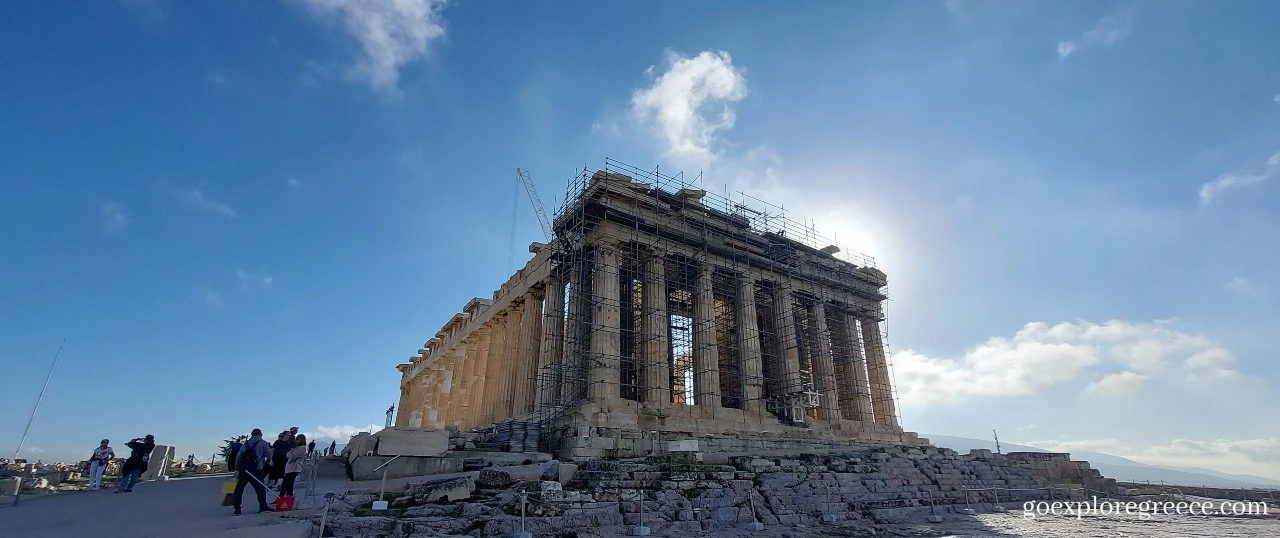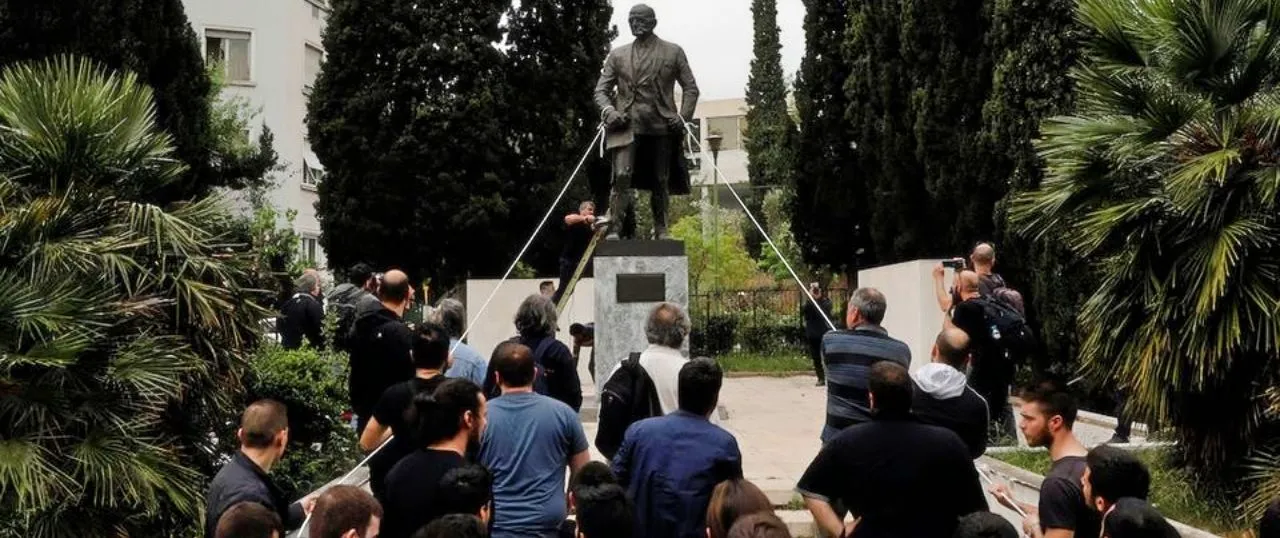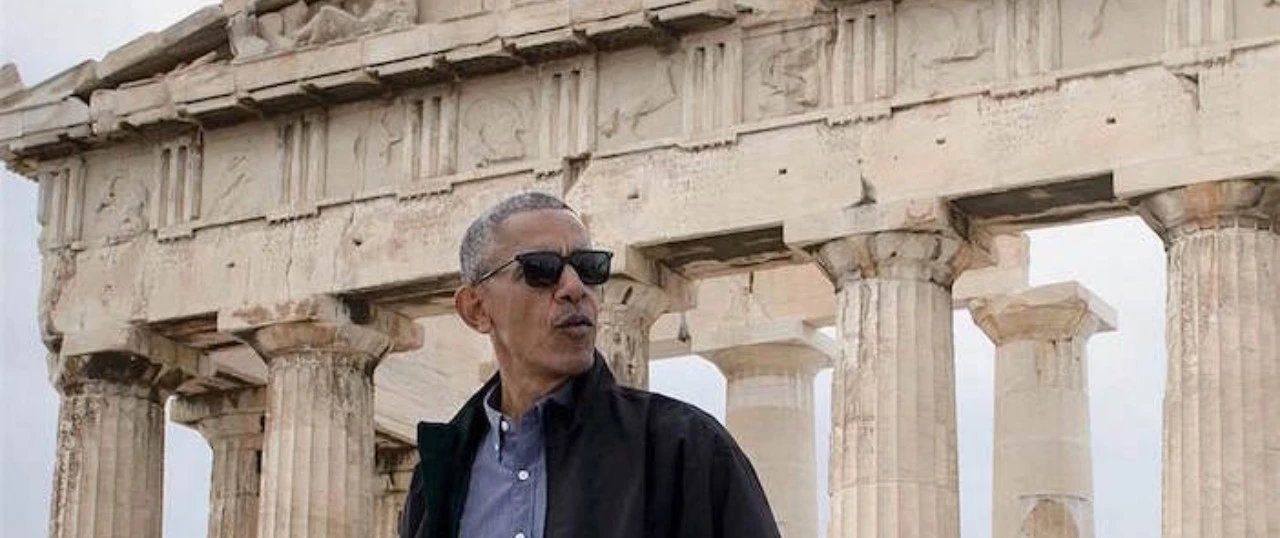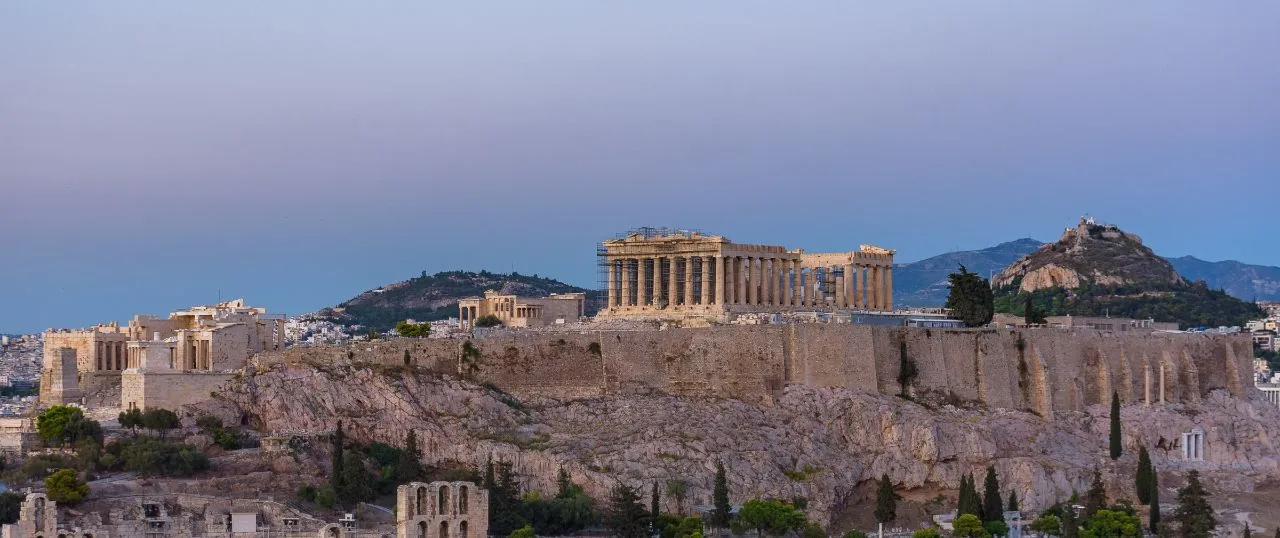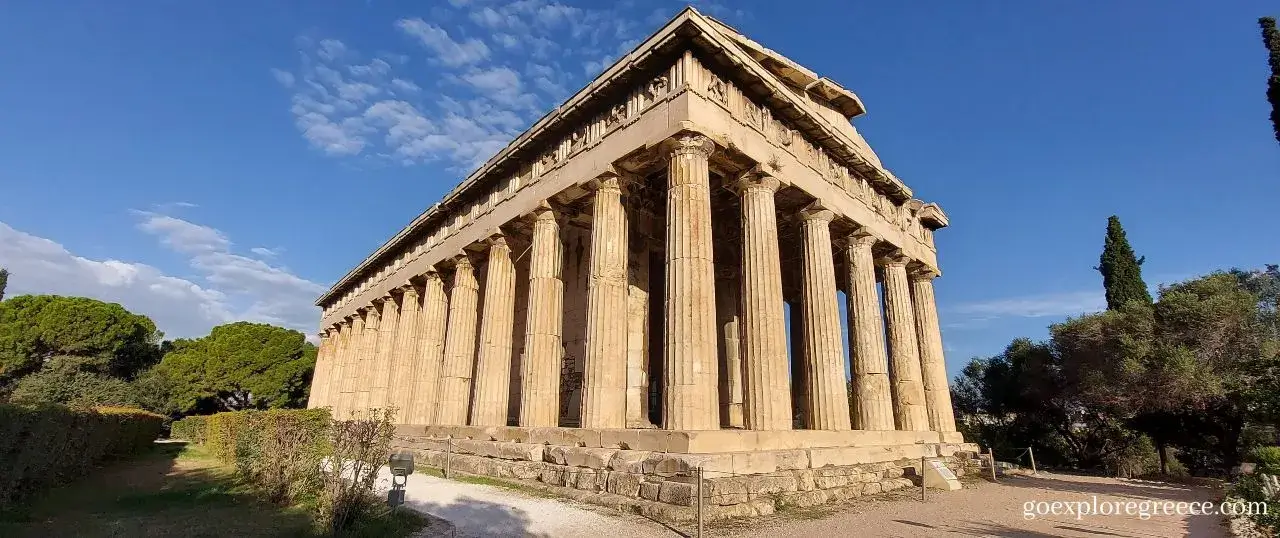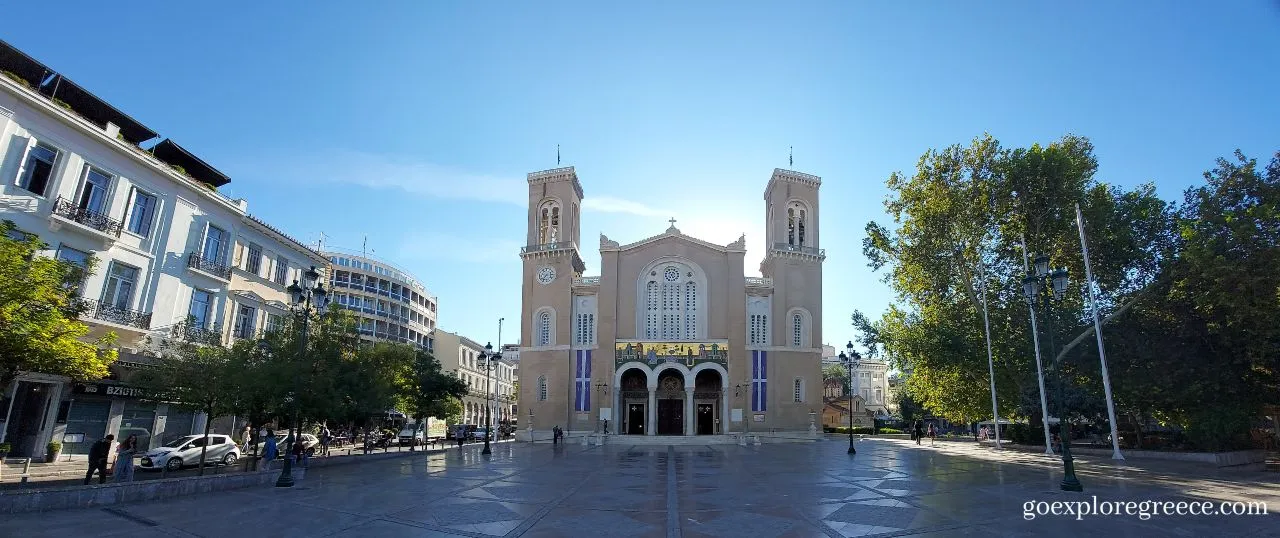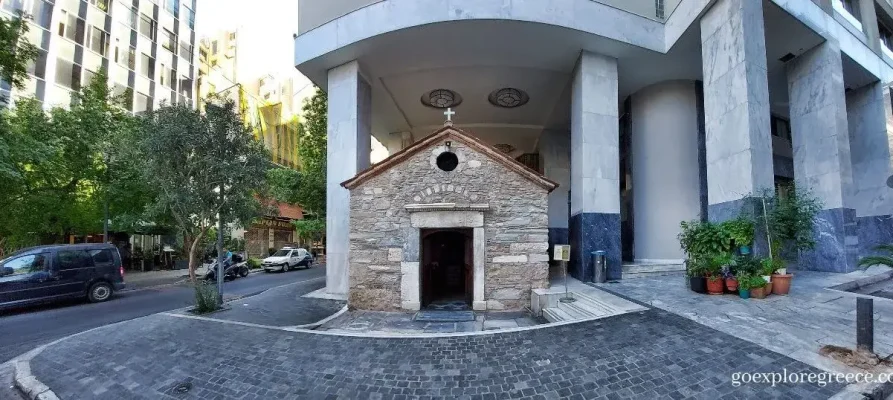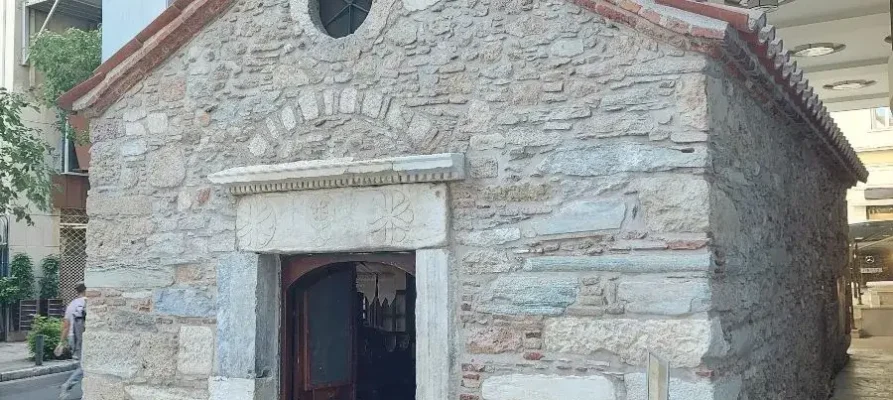Church of Hagia Dynamis
Church of Hagia Dynamis
The Holy Church of Hagia Dynamis is located in the heart of Athens, on the corner of Peiraios and Aiolou streets, about two minutes walk from the Metropolitan Cathedral of Athens, the Little Metropolis, and the famous Church of Panagia Kapnikarea near the famous Monastiraki Flea Market. Also known as the Holy Church of Hagia Dynamis (Sacred Power) or Church of Hagia Dynami, it is an ancient church dating back to the Byzantine era, with some parts of the church believed to have been built in the 11th century. But this church is unique and worth visiting because of its intriguing history.
In the 1830s, after the Greek War of Independence, the surrounding buildings around the church were demolished to widen the street to serve the city’s growing needs. During the 1950s, the area was again redeveloped, and the Greek government attempted to obtain the land the church was on to build the new headquarters for the Ministry of Education and Religion. However, the Greek Orthodox Church refused to give up the land and the church, so it was decided to build around it. In the end, this small single-aisle church found itself almost entirely nestled between large and tall buildings.
But wait, it gets even more interesting. Excavations came across a 50-foot tunnel beginning under the church connecting it to an extensive cave system that reaches the Acropolis and the Kaisariani Monastery on the north side of Mount Hymettus. This tunnel has a rich history, believed to have been used by the ancient Greeks and Romans. Unfortunately, in 1963, a steeple was built over the entrance to the tunnel, prohibiting future access. But just standing there and imagining what could be on the other side is enough to send shivers down your spine.
Now, let’s talk about the church’s name, Hagia Dynamis, which means “Holy Power” in Greek. Legend has it that the name came from an incident in which a group of soldiers were fighting in the area when they saw a bright light coming from the church. They sought refuge in the church, and the light disappeared. After that, the soldiers won the battle, and the church became known as “Hagia Dynamis” or “Holy Power.” Whether you believe in legends or not, you can’t deny the power that this church holds.
One of the most fascinating things about the Holy Church of Hagia Dynamis is its architecture. The church is Byzantine, with a dome on the top added in the 19th century. The church’s interior is simple, with a beautiful wooden iconostasis and some frescoes. But what makes it unique is the combination of Byzantine architecture with the surrounding modern buildings. The contrast between the old and the new is striking and awe-inspiring.
Visiting the Holy Church of Hagia Dynamis is not only an opportunity to admire its architecture and learn about its rich history but also a chance to experience the spiritual aspect of Athens. The church is still in use today, and you might be lucky enough to attend a service while you’re there. It’s an excellent opportunity to witness the Greek Orthodox Church’s religious practices and immerse yourself in the local culture.
If you’re looking for a unique experience in Athens, the Holy Church of Hagia Dynamis is worth visiting. It’s an opportunity to witness the city’s rich history, the combination of old and new architecture, and experience the spiritual side of Athens. And even if you’re not religious, the church’s peaceful atmosphere and stunning architecture are enough to captivate anyone.
When visiting the Holy Church of Hagia Dynamis, make sure to dress appropriately, as it is an active religious site. Also, remember that it is a small church, so be respectful of the space and the people who might be there for worship.
Finally, it’s important to note that the Holy Church of Hagia Dynamis is not as well-known as some of the other attractions in Athens, which means that it’s usually not crowded. This makes it an ideal place to escape the hustle and bustle of the city and take a moment to reflect.

